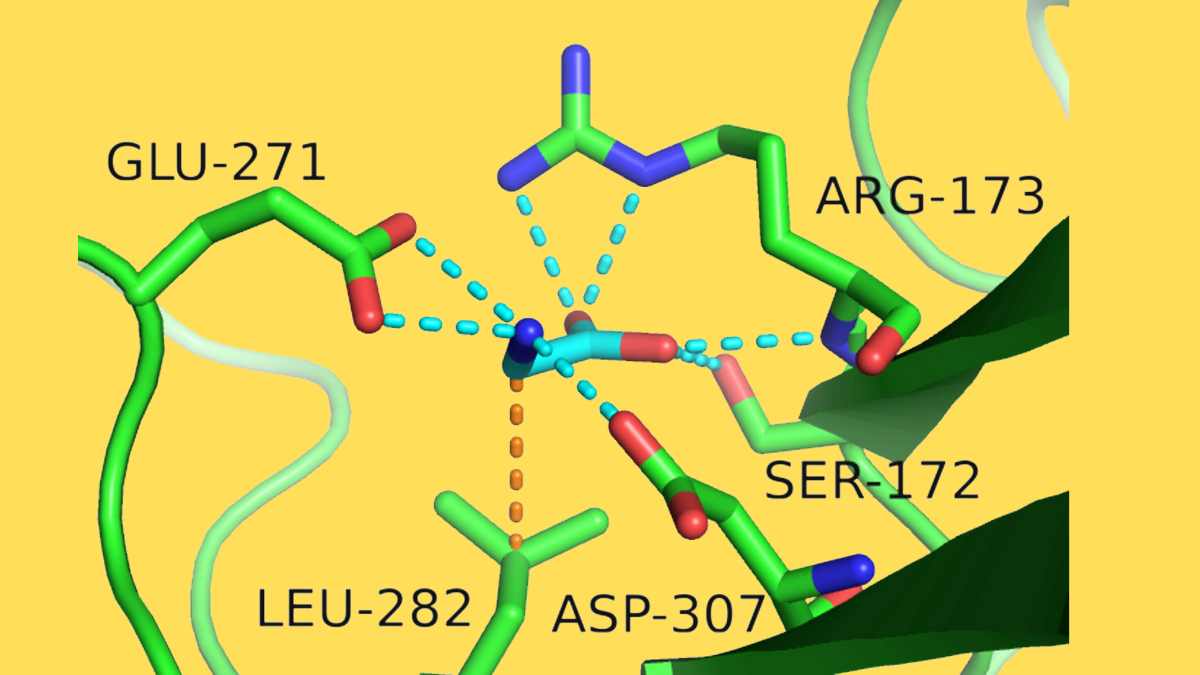Glycine, a common amino acid, can send a “slow-down” signal to the brain, potentially contributing to major depression, anxiety, and other mood disorders in some people, according to researchers at The Herbert Wertheim UF Scripps Institute for Biomedical Innovation & Technology.
The discovery contributes to a better understanding of the biological causes of major depression and may hasten efforts to develop new, faster-acting medications for such difficult-to-treat mood disorders.
Major depression is one of the world’s most pressing health concerns. Its prevalence has increased in recent years, particularly among young adults.
As the disability, suicide, and medical costs associated with depression have increased, a study conducted by the Centers for Disease Control and Prevention in 2021 estimated the economic burden to be $326 billion per year in the United States.
“There are limited medications for people with depression. Most of them take weeks before they kick in, if they do at all. New and better options are really needed,”
said Kirill Martemyanov, Ph.D., corresponding author of the study.
Brain Cell Sensors
Martemyanov and his team of students and postdoctoral researchers have been working on this discovery for many years, according to Martemyanov. They didn’t set out to discover a cause, let alone a treatment option for depression.
Instead, they posed a simple question: How do sensors on brain cells receive and transmit signals into the cells, causing the cells’ activity to change?
Martemyanov suspected that therein lay the key to understanding vision, pain, memory, behaviour, and possibly much more.
“It’s amazing how basic science goes. Fifteen years ago we discovered a binding partner for proteins we were interested in, which led us to this new receptor. We’ve been unspooling this for all this time,”
Martemyanov said.
GPR158 Receptor
The Martemyanov team discovered in 2018 that the new receptor is involved in stress-induced depression. Mice lacking the GPR158 receptor gene were surprisingly resistant to chronic stress.
He stated that this demonstrated GPR158’s potential as a therapeutic target. What sent the signal, though?
In 2021, his team made a breakthrough when they figured out the structure of GPR158. What they observed astonished them. In contrast to human cells, the GPR158 receptor resembled a microscopic clamp with a compartment, similar to what they had observed in bacteria.
“We were barking up the completely wrong tree before we saw the structure. We said, ‘Wow, that’s an amino acid receptor. There are only 20, so we screened them right away and only one fit perfectly. That was it. It was glycine,”
Martemyanov said.
Brake, Not Accelerator
This was not the only odd occurrence. The signaling molecule was an inhibitor, not an activator, in the cells.
When bound to glycine, the business end of GPR158 was associated with a partnering molecule that acted as a brake rather than an accelerator.
“Usually receptors like GPR158, known as G protein coupled receptors, bind G proteins. This receptor was binding an RGS protein, which is a protein that has the opposite effect of activation,”
said first author Thibaut Laboute, Ph.D., a postdoctoral researcher from Martemyanov’s group.
For decades, scientists have catalogued the function of cell receptors and their signalling partners. Those without known signalers, such as GPR158, are called “orphan receptors.”
Metabotropic Glycine Receptor
Laboute stated that the discovery means GPR158 is no longer an orphan receptor. Instead, the group renamed it mGlyR, which is an abbreviation for “metabotropic glycine receptor.”
“An orphan receptor is a challenge. You want to figure out how it works,” Laboute said. “What makes me really excited about this discovery is that it may be important for people’s lives. That’s what gets me up in the morning.”
Glycine is marketed as a nutritional supplement that enhances mood. It is a fundamental building block of proteins and has complex effects on numerous cell types.
In some cell types, it transmits slowing signals; in others, it transmits excitatory signals. Some research has linked glycine to the development of aggressive prostate cancer.
Martemyanov stated that more research is required to comprehend how the body maintains the proper balance of mGlyR receptors and how this affects brain cell activity. He intends to keep at it.
Abstract
Glycine is a major neurotransmitter involved in several fundamental neuronal processes. The identity of the metabotropic receptor mediating slow neuromodulatory effects of glycine is unknown. We identified an orphan G protein–coupled receptor, GPR158, as a metabotropic glycine receptor (mGlyR). Glycine and a related modulator, taurine, directly bind to a Cache domain of GPR158, and this event inhibits the activity of the intracellular signaling complex regulator of G protein signaling 7–G protein β5 (RGS7-Gβ5), which is associated with the receptor. Glycine signals through mGlyR to inhibit production of the second messenger adenosine 3′,5′-monophosphate. We further show that glycine, but not taurine, acts through mGlyR to regulate neuronal excitability in cortical neurons. These results identify a major neuromodulatory system involved in mediating metabotropic effects of glycine, with implications for understanding cognition and affective states.
Reference:
- Thibaut Laboute et al, Orphan receptor GPR158 serves as a metabotropic glycine receptor: mGlyR, Science (2023) Vol 379, Issue 6639 pp. 1352-1358 DOI: 10.1126/science.add7150
Last Updated on November 11, 2023
